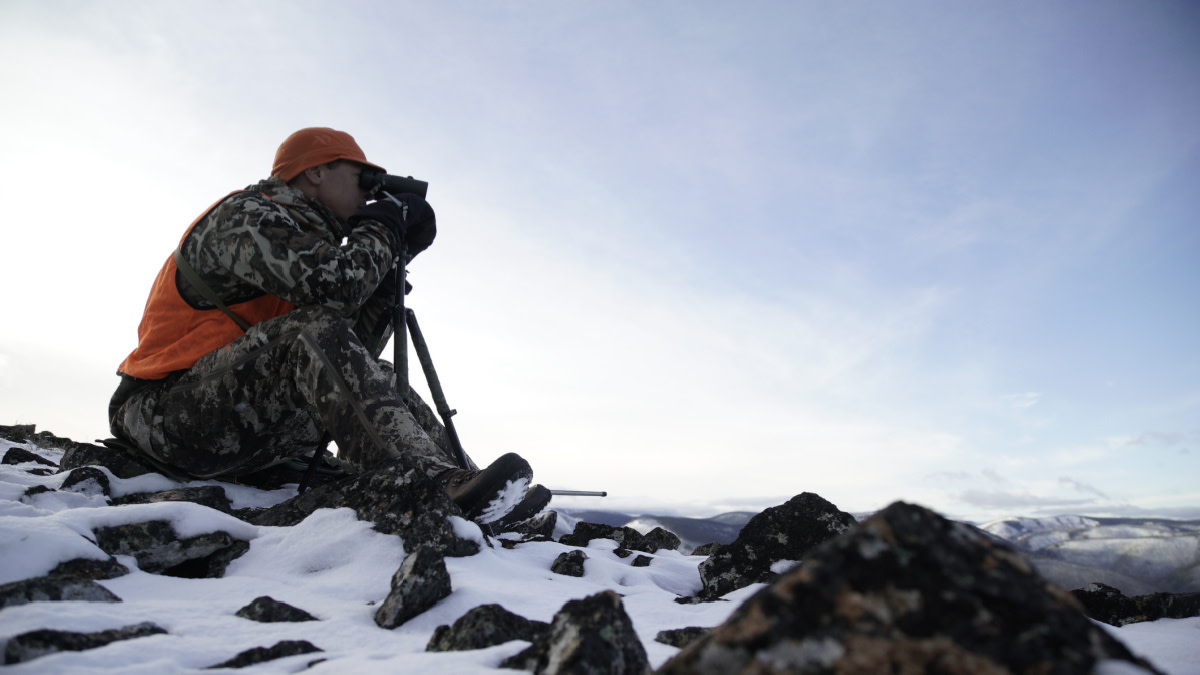
Every day, our fellow meateaters send us more than 100 emails regarding hunting, fishing, cooking, conservation, and more. So, we decided to publish a series dedicated to our favorite FAQs. Ask MeatEater is powered by onX, creators of the best digital mapping tool for hunters and anglers.
Snow gives us the chance to see where the elk have been and where they are going much more easily than in dry ground conditions. It can also shuffle the deck and move elk into places they weren’t before, with less caution than they might normally show.
When hunting elk in snow, I’ll not only glass for the elk but also for signs of where they’ve been—especially where they’ve been feeding. Traveling elk will leave behind trails that weave across hillsides. Feeding elk leave behind trails but also large areas of pawed snow where they dug down to access grass. These pawed-out spots are oftentimes the size of beds; and don’t be surprised if there’s a few beds mixed in. When winter comes on, elk are forced to spend more time feeding and less time traveling or seeking secluded cover. This simple fact puts them out in the open more often, making them easier to find. If I glass up elk trails and feeding sign, I’ll post up on the feeding sign, expecting them to come back to that zone.
In some elk country, snow will cause the elk to migrate. In these situations it’s good to know the general direction of travel and set up on pinch-points and funnels that will move elk past you. My favorite pinch in the mountains is a saddle. You’ll have to know the general summer range and general winter range to pick a saddle between the two. I use onX to e-scout those types of spots before the snows come.
Another way to hunt elk in the snow is by tracking them. It’s simple—kind of. First, find a fresh set of tracks. You’ll know they’re fresh through many visual clues, but the two most common are if they’re in recently fallen snow, or if the snow is older, the edges and bottom of the track are still soft and haven’t hardened.
If you decide to follow the tracks, make sure the wind is in your face. Hopefully the elk’s route will keep the wind in your face or at least crossing your direction of travel. It seems like everyone should know this but it bears mentioning anyway: make sure you are following the tracks in the right direction. The elk’s track is pointy in the front, and the dewclaws are in the back. The dewclaws will leave two small, round indentations behind the hoof print. Next, use onX to predict where you will most likely catch up to the elk. Elk in snow are looking for feed, so catching them in the timber is less likely than catching them in the open. Find the next open country on your satellite image and pay close attention as you approach. The elk may be bedded on the fringe or they could be feeding in the open.
If you’re keen on finding a big bull, focus your attention on south facing, wind-blown ridges. Although the wind can make for a cold spot to hang out, it also clears away the snow, making easy access to feed. The southern exposure makes the most of any sunlight to melt snow and warm bodies. These spots also tend to be up higher on the mountain. The hiking will be harder through deeper snow to get there and you’ll see fewer elk, but the payoff might be a giant loner.





